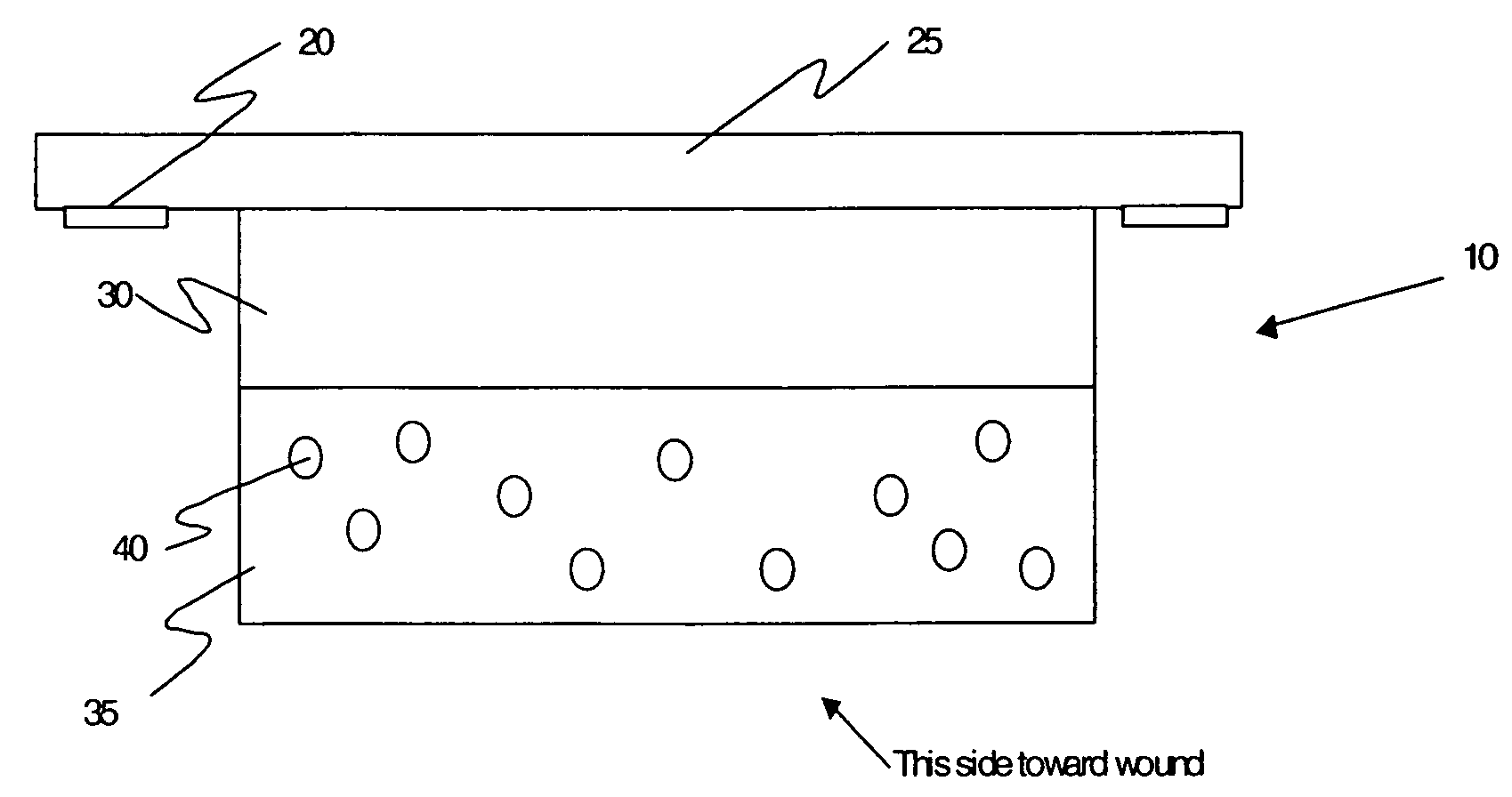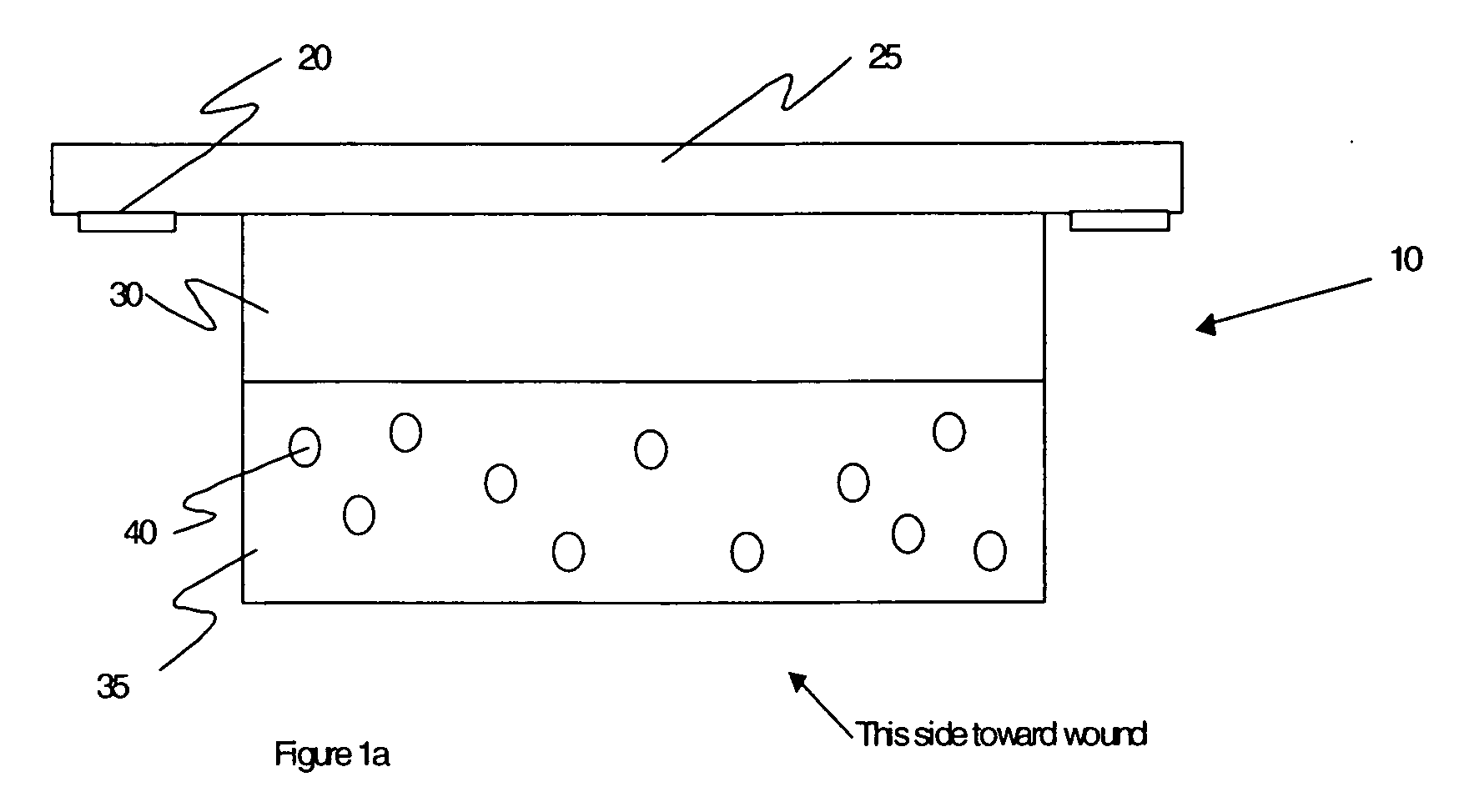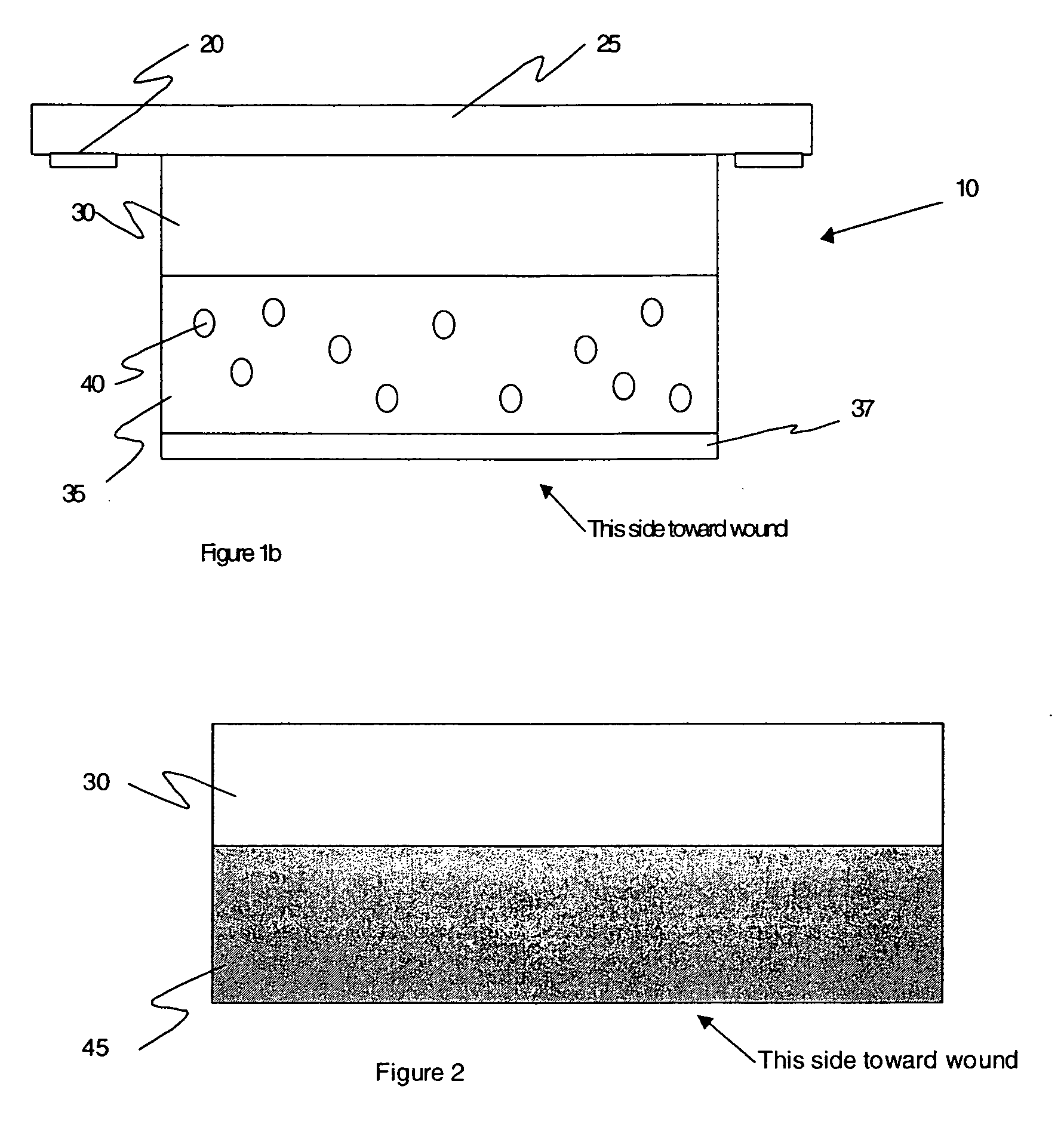Wound dressing
a wound dressing and wound technology, applied in the field of wound dressings, can solve the problems of high cost of wound treatment, high cost, and high labor intensity of wound care, and achieve the effects of preventing the release or diffusion of second materials, monitoring healing progress, and promoting healing
- Summary
- Abstract
- Description
- Claims
- Application Information
AI Technical Summary
Benefits of technology
Problems solved by technology
Method used
Image
Examples
Embodiment Construction
[0026] The invention is a wound dressing containing a first material (barrier material), which confines a second material (active material) useful in promoting, diagnosing or monitoring wound healing. The barrier material is composed of gelatin or other material that it is degraded by one or more of the MMPs (metalloproteinases) naturally present in a wound. Degradation of the barrier material releases the active material, which then promotes healing of the wound and / or indicates the status of the wound by the concentration of the released second material. In various embodiments, there may be more than a single barrier material, and more than a single active material.
[0027] The preferred embodiment for a dressing 10 is shown in FIG. 1a. Droplets 40 of dye in an oil solvent are dispersed within a layer of gelatin 35. A backing 25 of transparent urethane provides mechanical support for the dressing components, and holds the dressing against the wound with the help of adhesive 20 at t...
PUM
 Login to View More
Login to View More Abstract
Description
Claims
Application Information
 Login to View More
Login to View More - R&D
- Intellectual Property
- Life Sciences
- Materials
- Tech Scout
- Unparalleled Data Quality
- Higher Quality Content
- 60% Fewer Hallucinations
Browse by: Latest US Patents, China's latest patents, Technical Efficacy Thesaurus, Application Domain, Technology Topic, Popular Technical Reports.
© 2025 PatSnap. All rights reserved.Legal|Privacy policy|Modern Slavery Act Transparency Statement|Sitemap|About US| Contact US: help@patsnap.com



